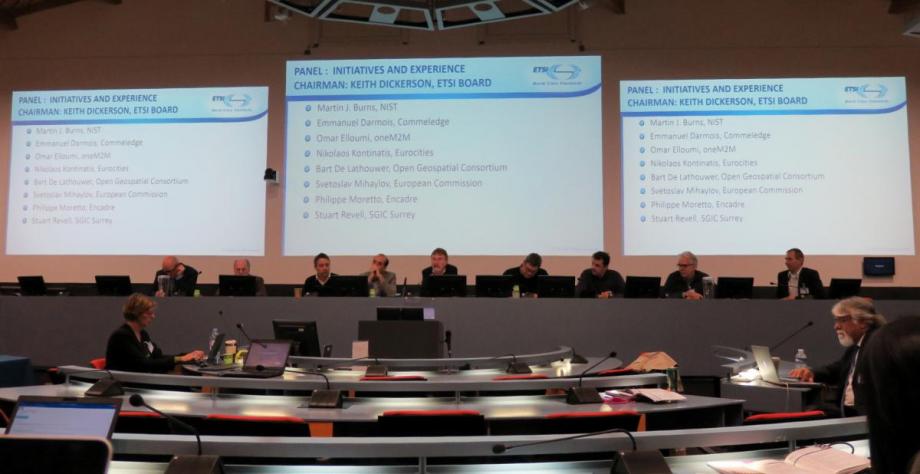VICINITY project at the ETSI IoT/M2M Workshop 2016 featuring the Smart World

The ETSI IoT/M2M workshop has become a must-attend for anyone involved in IoT standards, whether at IoT standards management / technology roadmap and planning, IoT standards development, or IoT standards users and followers.
This year, the workshop focused on oneM2M Release 2, published shortly before the workshop. Main topics in the workshop included security and semantic interoperability, two aspects of Release 2 which have received particular attention and will be considered in the context of activities on Smart Cities and Smart Appliances in ETSI's SmartM2M technical committee.
The workshop also discussed the Alliance for IoT Innovation (AIOTI) initiative, the Smart Cities Large Scale Pilot projects and the work delivered by the TC SmartM2M task force on IoT Standards landscaping and IoT European Large Scale Pilots (LSP) gap analysis.
During the workshop there was also a series of demonstrations showing interoperability between a wide range of IoT devices/gateways.
Keith Dickerson (CAL) chaired the final session and panel on Smart City Initiatives.
Raul Garcia Castro (UPM) also attended the workshop and participated actively during discussions. Both Raul and Maria Poveda (UPM) from VICINITY were highlighted for their contribution to the work on the SAREF Extensions on Smart Energy and Smart Buildings.
Conference Feedback
Smart Cities: The first day of the workshop was devoted to smart city requirements and initiatives. The future roadmap for smart cities focuses on the creation of urban (IoT) platforms that can process city data. VICINITY has an opportunity to deliver a showcase of one of the building blocks of such platforms, dealing with seamless IoT data interoperability in the different pilots and supporting the social network of data interchanges. Key issues from smart cities which VICINITY can address include:
- Complexity and fragmentation of standards leading to a lack of interoperability at all levels.
- Major concerns about Security, Privacy and Trust.
- Data Semantics and interworking.
Semantic Interoperability: Two ontologies were presented and discussed: the ETSI SAREF ontology and the oneM2M ontology. The VICINITY project is aligned with these ontologies and with semantic interoperability initiatives at European and International levels. Participation of UPM in these initiatives will ensure continuous alignment as well as the leading role of VICINITY in this topic. It is important that VICINITY is recognised as both contributing to SAREF and its extensions and also to be using these extensions in the definition and evaluation of the pilots.
Security and Privacy: It is challenging to provide adequate security as well as the low latency required by the IoT. This can be done through the use of TLS/DTLS handshaking which is present in the oneM2M Security Framework, and VICINITY should align with and demonstrate this. Another promising approach uses Blockchain and VICINITY should explore this to see if it is viable.
Low Power Devices: IoT needs a combination of ultra low power consumption, extended (deep) coverage and low complexity/cost. The business case is strongly impacted if it is necessary to change batteries frequently, and so it is important that VICINITY picks technologies that are sufficiently low power to be viable. Cellular Low Power Wide Area (LPWA) networks will start to be deployed in 2018 with 7x the coverage of 3G mobile networks and so could reach every part of the EU (including basements). Batteries in these devices could last up to 19 years if data transmission is limited to 1 Kbyte of data per day. LoRaWAN was also demonstrated during the workshop and will complement LTE‐CatNB1 when really low power is needed.
Useful Links:
Workshop web page (including program)

